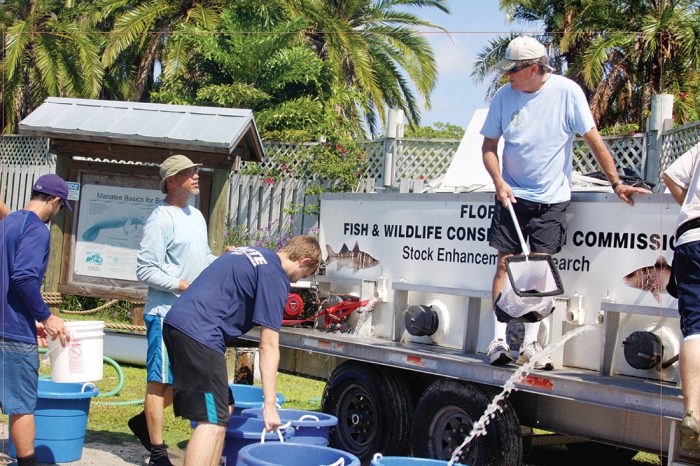In late November, scientists with the Mote Marine Laboratory released 320-hatchery reared snook into a Sarasota Creek as part of research into methods for enhancing wild snook populations.
Snook are one of Florida’s most popular species for anglers, and they have had a rough time over the years. Winter freezes, red tides and increased fishing pressure all contributed to a sharp decline in populations in the late 1980s. Since that time, careful management and strict fishing regulations have led to a rebound in fish stocks, but snook are a species highly susceptible to environmental factors on the northern end of their natural range in Florida.
For this reason, Mote and FWC have been continually researching the use of hatchery-reared snook to replenish populations hit by red tides or cold weather. This most recent study will tag and stock 10,000 to 15,000 juvenile snook into various waters of Sarasota and Manatee counties, including Bowlees Creek, Whitaker Bayou, Hudson Bayou, Phillippi Creek, North Creek and South Creek.
The idea is to develop guidelines and learn more about how hatchery snook behave in the wild and their impact on fisheries. Mote will monitor the released snook in Phillippi Creek using transponders similar to the microchips for cats and dogs.
This research is funded in part through Mote’s Fisheries Conservation and Enhancement Initiative and FWC’s Fish and Wildlife Research Institute.
